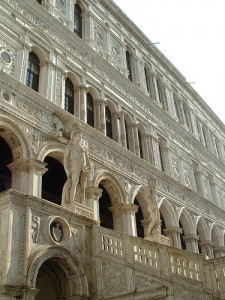 The huge Gothic castle or palace in Venice is one of the most impressive museums in the region. The Palazzo Ducale, or Doge’s Palace was home to the elected ruler, Doge, of Venice for centuries. It was not only the home of the ruler, but the center of government as well. The Doge’s Palace was the home of the law courts, the center of the bureaucracy and at one time, even the city jail.
The huge Gothic castle or palace in Venice is one of the most impressive museums in the region. The Palazzo Ducale, or Doge’s Palace was home to the elected ruler, Doge, of Venice for centuries. It was not only the home of the ruler, but the center of government as well. The Doge’s Palace was the home of the law courts, the center of the bureaucracy and at one time, even the city jail.
Palazzo Ducale
Originally built in the 19th Century, the Palazzo Ducale has been rebuilt and added to multiple times until 1420. When you visit the palace, you’ll see impressive statues and decorations both inside and out. Carvings of animals, flowers and visual depictions of the months of the year decorate the thirty-six columns along the front of the building. Huge statues of Neptune and Mars, ancient Roman gods, are found by the Scala dei Giganti, or huge stairs built inside the palace.
The Art of the Doge’s Palace
Inside the loggia of Palazzo Ducale, you’ll find the original crowning room of the leaders of the city. While there are no ceremonies taking place in the room today, you’ll also find a series of paintings that are interesting, but not hugely impressive. The original works of the masters was lost in a fire in 1577. Fortunately, many amazing pieces of art did survive and are found a bit later on your tour through the building.
While there are paintings throughout the palace, many of the most impressive works of art are in the designs of the building. As the doges came and went in the palace over the centuries, they worked to improve the palace and add to its already grand majesty. For example, the two main staircases – the Scala dei Giaganti, or enormous stairs, and the Scala d’Oro, or golden stairs – are some of the finest in the world.
As you travel up the stairs you’ll be surrounded by art on the walls and even the ceiling in the form of gilt stuccoes. Upstairs is the Sala del Maggior Consiglio, or the most magnificent room in the palace. Just outside as you finish your tour climbing through the palace, you’ll come to the Ponte dei Sospiri, or Bridge of Sighs. This bridge was made in 1602 to connect the palace to the new prison when it was built. Prior to new prison and bridge, prisoners were kept either in the attic of the palace or in the cellar awaiting trial and serving punishment.


